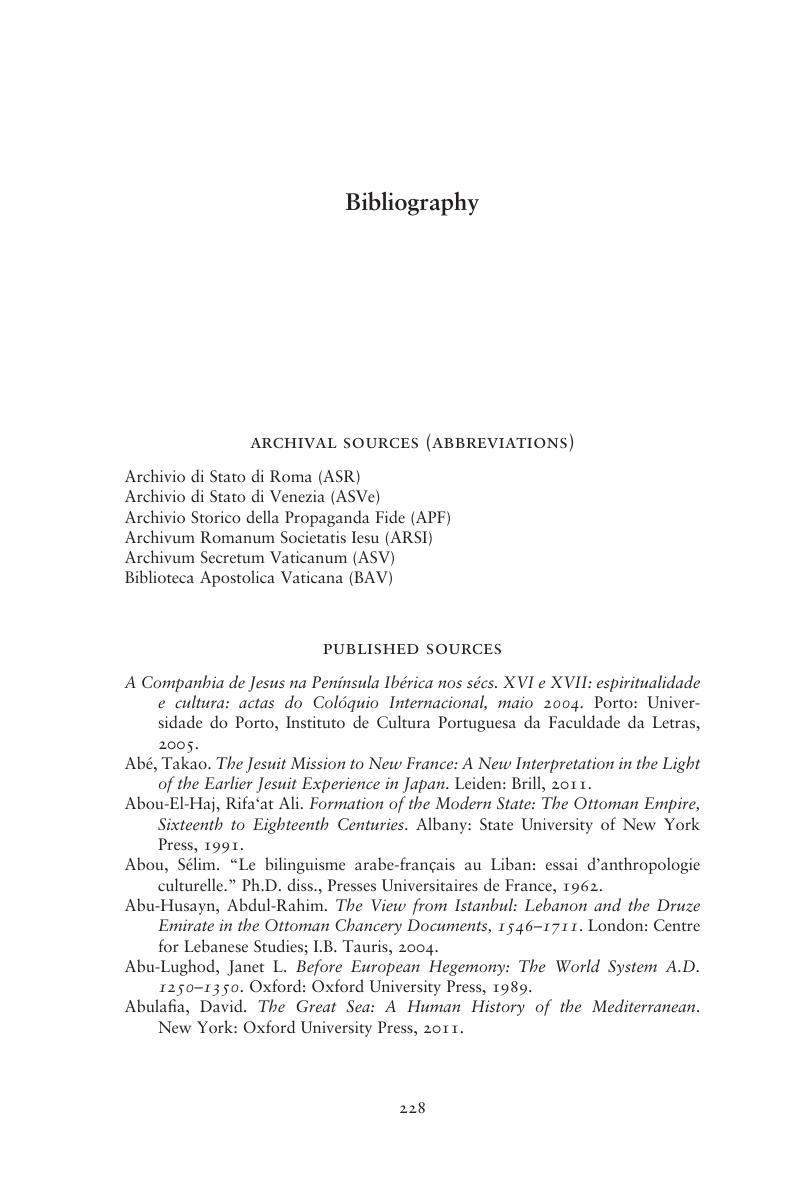 A Jewish Jesuit in the Eastern Mediterranean
A Jewish Jesuit in the Eastern Mediterranean Book contents
- A Jewish Jesuit in the Eastern Mediterranean
- A Jewish Jesuit in the Eastern Mediterranean
- Copyright page
- Contents
- Acknowledgments
- Introduction
- 1 Becoming a Jewish Jesuit: Eliano’s Early Years
- 2 Jesuit Missionary or Jewish Renegade? Eliano’s Confrontation with His Jewish Past
- 3 Jesuit Anti-Judaism and the Fear of Eliano’s Jewishness on the First Mission to the Maronites of Lebanon
- 4 Textual Transmission, Pastoral Ministry, and the Re-Fashioning of Eliano’s Intellectual Training
- 5 Revisiting Eliano’s Jewishness on His Return to Egypt
- 6 The Coptic Mission, Mediterranean Geopolitics, and the Mediation of Eliano’s Jewish and Catholic Identities
- 7 Eliano’s Reconciliation with His Jewishness in His Later Years
- Epilogue
- Bibliography
- Index
- References
Bibliography
Published online by Cambridge University Press: 27 September 2019
- A Jewish Jesuit in the Eastern Mediterranean
- A Jewish Jesuit in the Eastern Mediterranean
- Copyright page
- Contents
- Acknowledgments
- Introduction
- 1 Becoming a Jewish Jesuit: Eliano’s Early Years
- 2 Jesuit Missionary or Jewish Renegade? Eliano’s Confrontation with His Jewish Past
- 3 Jesuit Anti-Judaism and the Fear of Eliano’s Jewishness on the First Mission to the Maronites of Lebanon
- 4 Textual Transmission, Pastoral Ministry, and the Re-Fashioning of Eliano’s Intellectual Training
- 5 Revisiting Eliano’s Jewishness on His Return to Egypt
- 6 The Coptic Mission, Mediterranean Geopolitics, and the Mediation of Eliano’s Jewish and Catholic Identities
- 7 Eliano’s Reconciliation with His Jewishness in His Later Years
- Epilogue
- Bibliography
- Index
- References
Summary

- Type
- Chapter
- Information
- A Jewish Jesuit in the Eastern MediterraneanEarly Modern Conversion, Mission, and the Construction of Identity, pp. 228 - 257Publisher: Cambridge University PressPrint publication year: 2019


